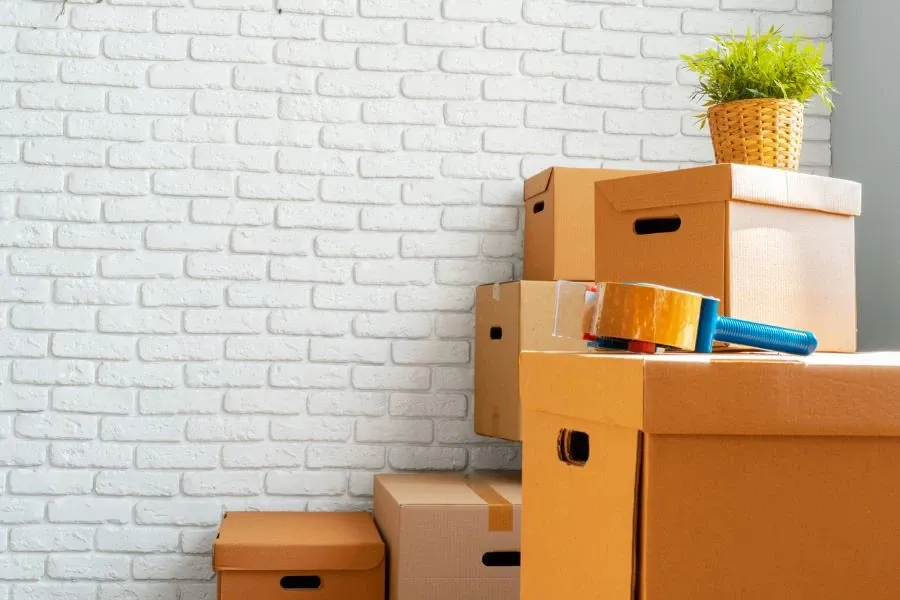How To Pack for Moving

Moving is no small feat. Whether you’re getting your first apartment in college or scaling up the size of your house to accommodate a growing family, navigating a move can feel overwhelming, as the to-do list seems never to end. To help out, we’ve compiled a moving checklist to follow when packing for a move, from protecting your belongings to staying organized throughout the moving process so your transition into your new home can be as seamless as possible.

Moving Tips Before You Start To Pack
Before you bust out any boxes, it’s important to note that the moving process should begin in the days and even weeks leading up to the big day. From decluttering to mail forwarding, these steps will make packing for your move much more manageable.
- Make donation piles. Go through all your clothes, kitchen supplies, holiday decorations, and more to decide what you no longer need. Bring all unwanted items to your local donation center to revitalize them.
- Eat your freezer food. Any frozen pizzas, meats, and ice cream should be used up well before you move.
- Schedule a truck. Moving trucks might be booked out weeks in advance, so once you know your moving date, get one on the calendar.
- Cease utilities. Schedule disconnect times for relevant utilities.
- Transfer records. Amid your packing, don’t forget to transfer medical and school records and change your address at your nearest post office.
Getting Ready to Pack
Depending on how much you have to move, packing can take anywhere from a few days to several weeks. Having a detailed plan and schedule before you put your belongings in boxes will save you from confusion and headaches down the road.
- Start early. Plan to begin packing days before you think you should, as best-laid plans often go awry.
- Set aside valuables. Essential documents, keepsakes, medications, and identification cards should be kept somewhere secure.
- Stock up on supplies. Head to your local home improvement store to buy boxes, tape, and other packing materials in bulk.
- Know what you have. List everything you need to account for, including where they’ll be packed. Be sure to label all boxes as well.
- Differentiate donations from storage. While some excess belongings could become secondhand items at a thrift store, others may just not fit in your new home. Personal storage units can be a great solution for seasonal or long-term storage.

Packing Tips for Moving
Now that all the pieces have fallen into place, it’s time to pack. The process of moving homes is always more involved than it seems on paper, so enlisting the help of friends and family is a great way to make it go faster—and have fun while doing it!
Organization Tips for Packing
- Pack essentials last. Don’t box up all your toiletries and clothing first thing. Start with your least-used items, such as guest room furniture and items stored in your basement, and work your way up the usage ladder.
- Label everything. Every box should be labeled with its contents, and be sure to keep track of what has already been packed in a separate list.
- Keep boxes small. As a rule of thumb, try not to let boxes weigh more than 50 pounds. This helps you stay organized, ensure the structural integrity of your boxes, and prevent injuries.
- Use your drawers. To avoid using a million boxes, storing inside drawers and appliances can be a great way to organize while saving space. For example, pack clothes inside dressers and put kitchen supplies inside your refrigerator.
Protecting Your Belongings While Moving
- Cushion all legs. Use Bubble Wrap or protective pads to wrap and protect any furniture legs.
- Package fragile belongings. Individually wrap plates and glassware using packing paper or newspaper, stacking plates on edge.
- Pad your art. Wall decorations, including artwork, mirrors, and picture frames, should be appropriately padded and stored in large boxes. Transport artwork flat between two pieces of cardboard. Pack them on their sides rather than stacking them.
- Cover up. Place furniture covers or plastic bags over wooden furniture, upholstery, and mattresses.
- Prepare your appliances. Clean and dry all appliances you plan on moving. During the move, pad movable parts with paper and tape doors shut.
- Seal boxes tight. Use packing tape to seal and shut all openings and cracks in boxes to prevent dust and debris from coating your belongings during your move and storage.

Save Space in Your New Home at Bluebird Self Storage
Whether downsizing your home or expecting a new family member, moving homes can bring up many new space-related problems. Bluebird Self Storage is here to absolve any storage concerns you may have regarding our inexpensive, secure storage solutions for New England homeowners. With a broad range of storage options, including amenities such as true climate control and our Nokē Smart Entry System, giving you peace of mind is a promise we can make.
To make room for memories in your new home, contact us today and find us at a location near you!